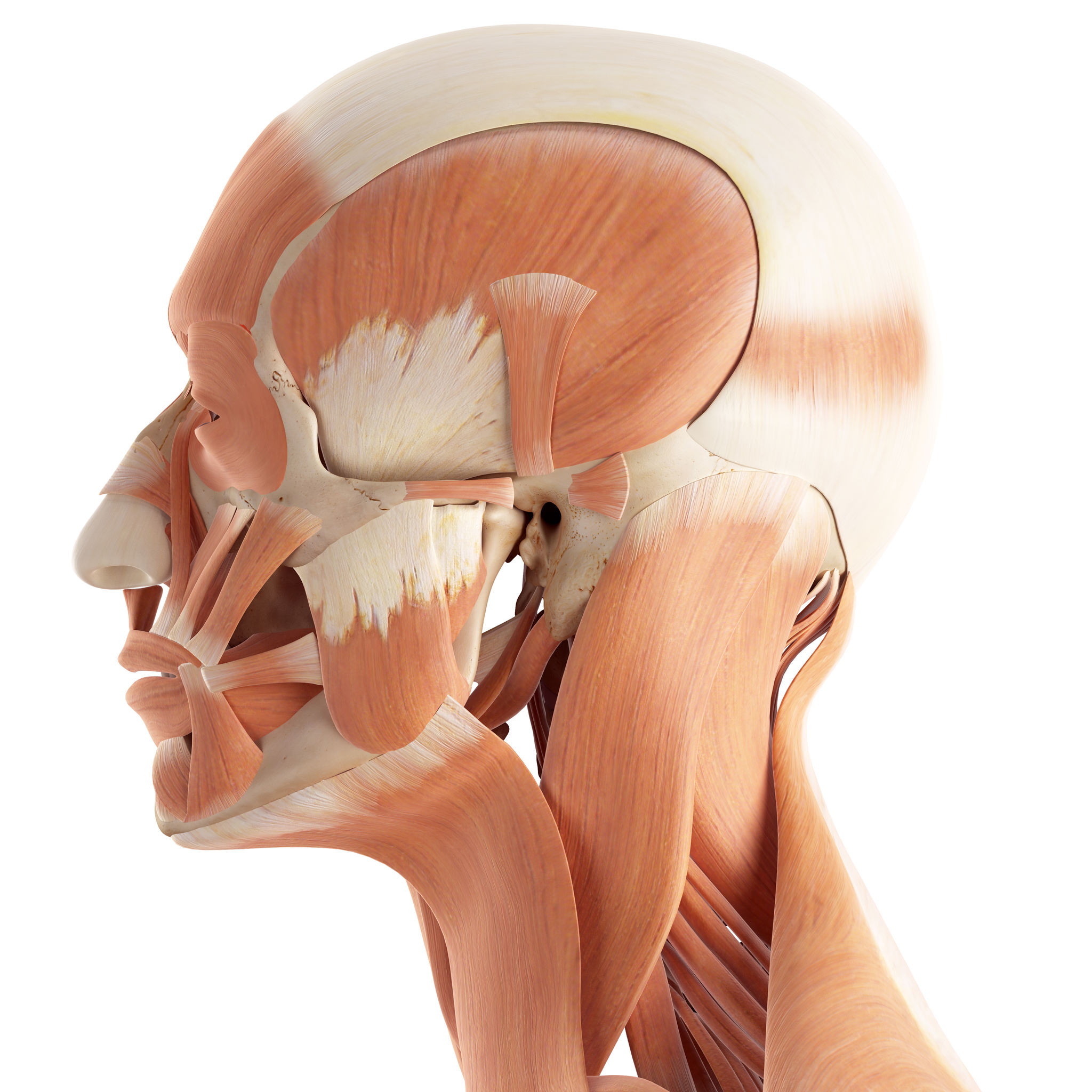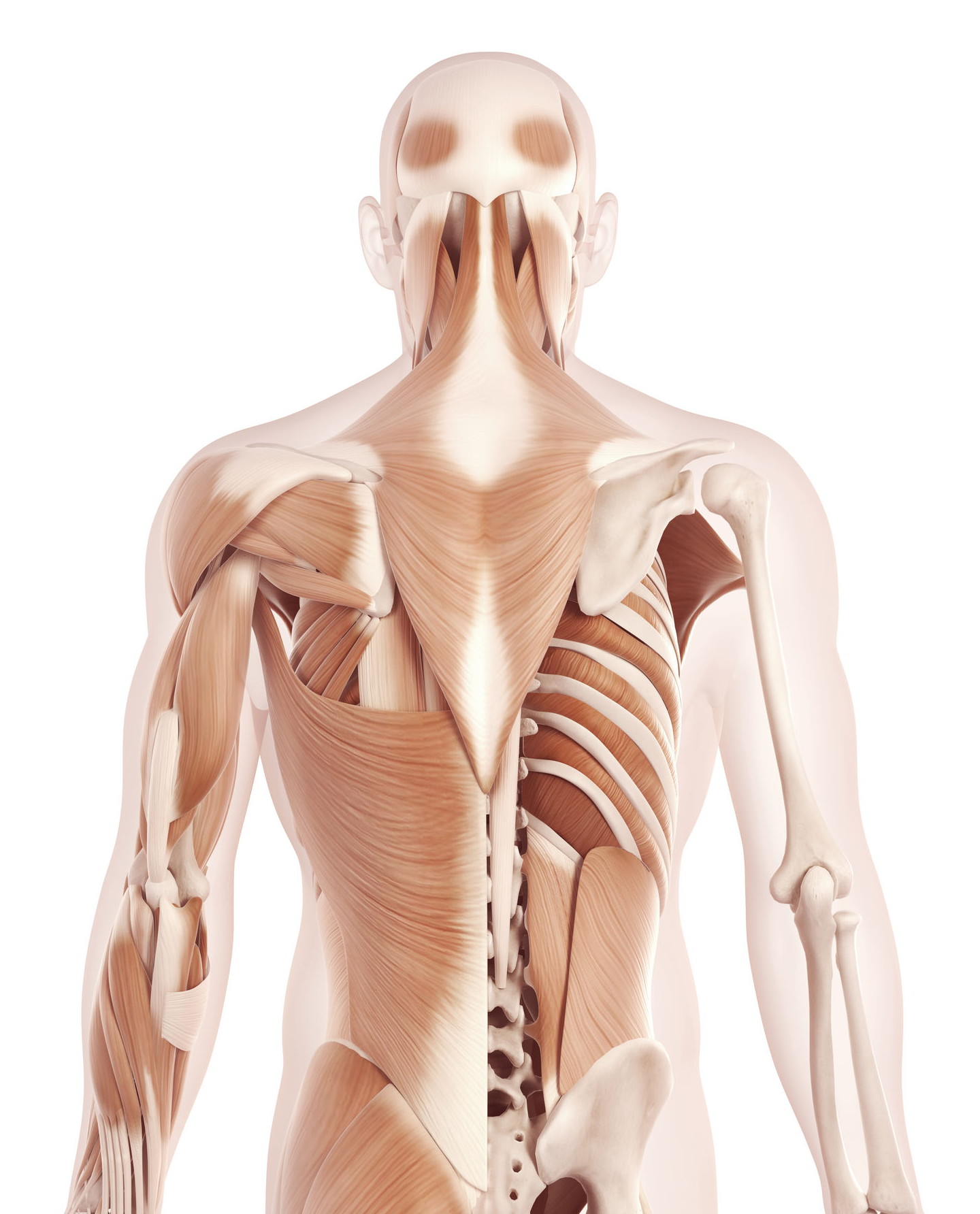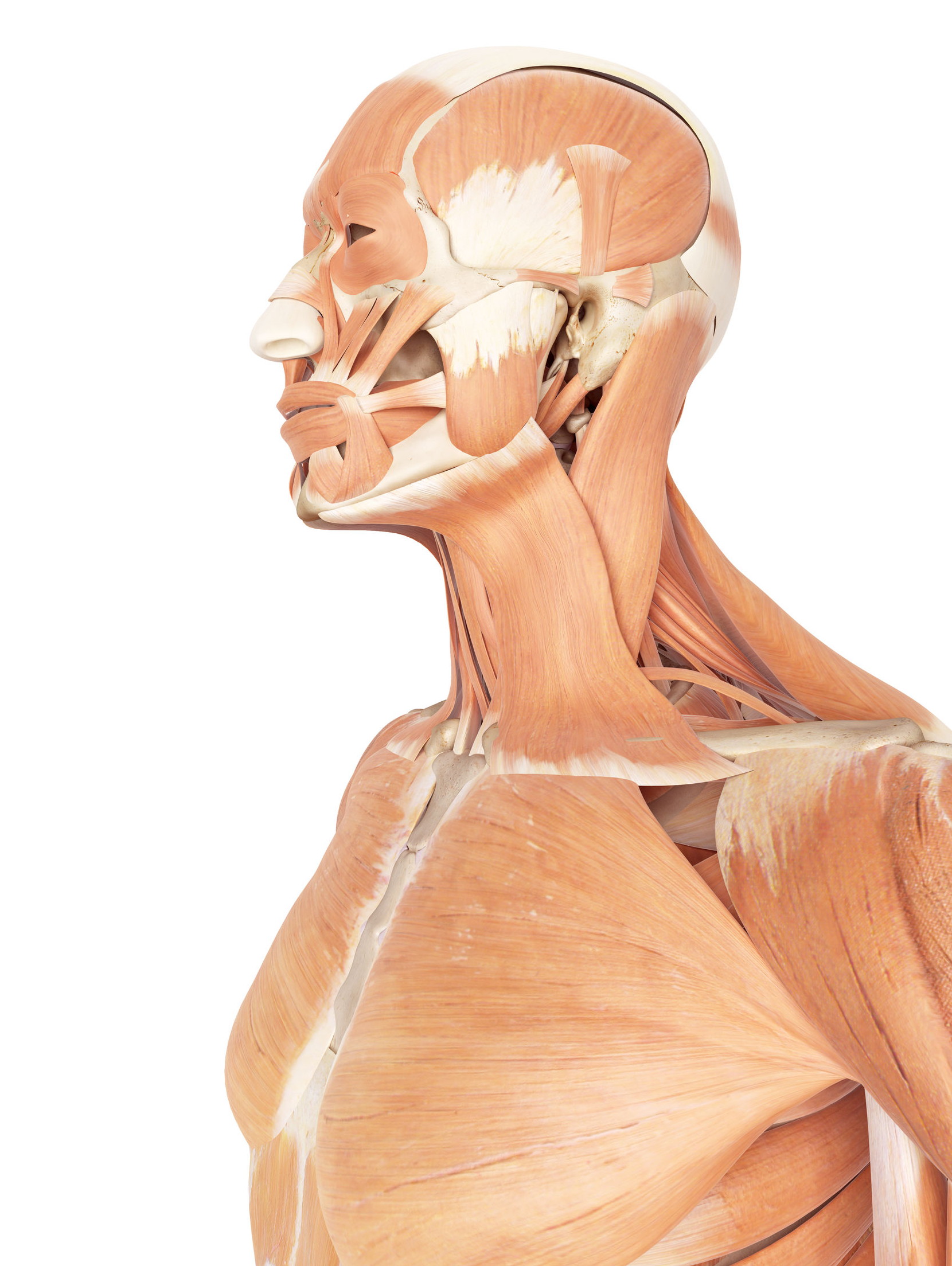L'anatomie de votre céphalée de tension
If you’re reading this post, you may be one of the 45 million Americans who suffer from chronic headaches. Headaches are one of the most frustrating pain conditions because the causes are so varied and can seem completely mysterious. In fact, over 150 different types of headache have been established by the International Classification of Headache Disorders.
Le coût du travail manqué et des frais médicaux liés aux maux de tête est estimé à environ 50 milliards de dollars par an aux États-Unis. Si nous pouvons commencer à gérer et à éliminer nos maux de tête, nous pourrions économiser beaucoup d'argent, éviter de prendre des médicaments et prévenir beaucoup de douleur et de souffrance.
Dans cet article, j'expliquerai comment la tension musculaire chronique dans la tête, le cou et le dos peut causer et contribuer aux céphalées de tension, et comment vous pouvez soulager vos maux de tête en relâchant cette tension musculaire et en réduisant votre stress.
“I have been taking the Level One online course and greatly enjoying it. I really look forward to my daily practice, and am quite amazed at how consistent I’ve been with it. I have done the exercises every day for a month, and have found great relief from my chronic headaches. Thank you so much for your program. It has been a huge gift in my life, and I have been telling others about it!”
Qu'est-ce qui cause les maux de tête?
According to the National Headache Foundation, 78% of all headaches are classified as tension headaches, which can be brought on by chronic muscle tension as well as stress, anxiety, or injury. Tension headaches typically feel dull and aching, as if a band is tightening around your head.
Le deuxième type de mal de tête le plus courant est la migraine, qui provoque une douleur intense et s'accompagne souvent de troubles de la vision ou de nausées. Les migraines peuvent être héréditaires; deux gènes ont été identifiés qui sont présents dans environ la moitié des personnes souffrant de migraine.
It’s believed that migraine headaches are brought on when the trigeminal nerve, the largest of the cranial nerves, releases irritating chemicals that cause blood vessels on the surface of the brain to swell. Migraine pain is often felt in the eyes or temples. Migraine headaches can be triggered by many controllable factors like lack of sleep, certain foods, missing a meal, stress, caffeine withdrawal, alcohol, and medications.
After tension and migraine, there’s a seemingly never-ending list of other causes of headaches: sinus pressure, viral infection, premenstrual symptoms, stroke, high blood pressure, dehydration, caffeine or sugar withdrawal, alcohol consumption, allergies, celiac disease, heavy metal poisoning, carbon monoxide poisoning, and brain conditions such as infection, tumor, and aneurysm.
In addition, medication-overuse or “rebound” headaches can occur when people take pain medication more than three times per week. Yes, that’s right—the exact medication that’s supposed to relieve your headaches can actually cause them.
There are no pain receptors in brain tissue itself, so headache pain is felt in areas surrounding the brain: the head and neck muscles, blood vessels, eyes, ears, sinuses, and the membrane lining the outer surface of the skull. And as you’ll learn in the next section, this is why tight muscles can cause tension headaches: by creating a great deal of pressure in the head.
Comment la tension musculaire provoque des céphalées de tension
Our muscles, tendons, ligaments, and bones create a complicated pulley system throughout our body. No part of our body moves independently; movement or tension in one part of the body always affects other parts of the body.
Alors, commençons par le haut. Il y a un muscle appelé occipitofrontalis qui commence au niveau des sourcils, recouvre le haut du crâne et s'attache à l'os occipital (l'arrière, la partie inférieure du crâne). Ce muscle soulève les sourcils et plisse le front.
When the occipitofrontalis is tight, a great deal of pressure is created in the head. But tension within this muscle isn’t the only thing that makes it tight. Muscles in the neck that attach to the occipital bone—the upper trapezius, sternocleidomastoid, suboccipitals, semispinalis capitis, and splenius capitis—can pull downward, creating tension in the occipitofrontalis and pressure in the head.


En fait, la tension dans l'un des muscles du cou et du dos, comme le groupe des érecteurs rachidiens, le groupe transversospinalis, le trapèze moyen et inférieur, et même le carré des lombes, créera une traction vers le bas qui peut contribuer à votre céphalée de tension.
Nous avons parlé de l'arrière du corps jusqu'à présent, mais parlons maintenant de la façon dont les muscles de votre visage et de l'avant de votre cou peuvent créer la même tension, pression et traction vers le bas.
Il y a 43 muscles de notre visage qui fonctionnent pour fermer les yeux, sourire et froncer les sourcils, et créer un nombre infini d'expressions faciales subtiles. Nos émotions s'expriment immédiatement et constamment à travers nos muscles faciaux ; il faut un effort conscient pour les garder détendus et notre visage sans émotion.
Over time, as a result of many contractions, our facial muscles build up chronic tension. This tightness can cause wrinkles, imbalances in our face, and of course, the pressure of a tension headache.
Les muscles qui déplacent la mâchoire - le temporal, le masséter et les ptérygoïdes - peuvent devenir très tendus en raison du stress et créer une tension dans le réseau de muscles et de tissu conjonctif qui recouvre le crâne.
Moving downward again, muscles in the neck including the sternocleidomastoid and scalenes flex the head and neck forward. If you spend a lot of time at a computer, looking down at your phone, or driving, these muscles are likely tight and could be contributing to the pressure of your tension headache.

Pourquoi développons-nous des tensions musculaires chroniques ?
To keep it simple, there are two main reasons why we build up chronic muscle tension. One is our repetitive daily activities, like our posture as we sit at our desk and the type of exercise that we do. Over time, we tend to build up residual muscle tension in the muscles that we use to do these repetitive postures or movements. This residual muscle tension is a negative effect of developing muscle memory, which you can read more about in this post.
The other main reason we build up chronic muscle tension is stress. We all react to stress in different ways, but one unavoidable physiological response to stress is increased muscle tension. If you experience regular headaches and suspect stress to be part of the reason why, please read The Life-Changing Link Between Anxiety and Muscle Tension.
Comment Somatiques Cliniques libère les tensions musculaires chroniques
Clinical Somatics is a groundbreaking method of neuromuscular education that releases chronic muscle tension using the technique of pandiculation.
Pandiculation resets the resting level of muscle tension through gentle movements that send accurate biofeedback to the nervous system. Since this process retrains the nervous system and actually changes the messages that your brain is sending to your muscles to stay tight, the results last much longer than when you temporarily release your muscles with massage or stretching.
Clinical Somatics exercises are taught in hands-on lessons and group classes, and you can also learn them on your own at home.
Comment déterminer la ou les causes de vos maux de tête
Si vous souffrez de maux de tête chroniques, cela vous aidera énormément, vous et votre médecin, si vous commencez à tenir un journal des maux de tête.
Passez quelques semaines noter tout ce que vous mangez et buvez, vos habitudes de sommeil, vos habitudes d'exercice et vos sources de stress. Notez tout ce qui concerne les maux de tête que vous ressentez : quand ils surviennent, combien de temps ils durent et ce qu'ils ressentent.
Notice if your muscles tend to get more tense when you feel stressed out. Also, notice where in your body you tend to get tight, and notice if an increase in your muscle tension tends to coincide with your headaches.
Remarquez si des activités relaxantes, comme se tremper dans un bain à remous ou partir en vacances, réduisent vos symptômes de maux de tête. Si tel est le cas, la tension musculaire et le stress contribuent probablement à vos maux de tête.
You’ll likely have to go through a process of experimentation and elimination to discover which factor or factors are causing your headaches. While it might take some time, it’s worth it. Just because headaches are common doesn’t mean you have to live with them.
The most effective Clinical Somatics exercises for relieving tension headaches
If you are interested in learning Clinical Somatics exercises, the best way to start is with the Level One & Two Courses. These online courses teach Clinical Somatics exercises that release chronic tension throughout the body. The exercises are slow, gentle and suitable for people of all ages and physical abilities.
The following exercises from the Level One & Two Courses are the most effective exercises for releasing the tight muscles that can cause tension headaches.
Cours de Niveau Un
Arch & Flatten: This exercise allows you to release and regain control of the lower back and abdominal muscles, improving the alignment of the pelvis and lower back.
Back Lift: This exercise is practiced lying on the stomach, allowing you to most effectively pandiculate the muscles on the back side of your body. When first practicing this exercise, the increase in blood flow may cause a temporary mild headache. This will stop occuring as your muscles release and you get accustomed to this exercise. You can skip it if you need do, just do elements of it, or practice it as a micromovement.
Arch & Curl: This exercise releases the abdominal, chest, and neck muscles.
One-Sided Arch & Curl and Diagonal Arch & Curl: Like the Arch & Curl, these exercises release the abdominal, chest, and neck muscles. They focus on one side of your body at a time, allowing you to address imbalances in your muscular patterns.
Iliopsoas Release: This is an important exercise for everyone to do regularly, as most of us hold unnecessary tension in our iliopsoas. Tension in the iliopsoas causes tension in the lower back, which can lead to tension in the upper back, neck, and shoulders.
Washcloth: This exercise involves a twisting movement of the shoulder girdle along with rotation of the entire spine; it is a wonderful release for the neck, shoulders, back, and waist muscles. You can practice the upper body part of the exercise on its own to focus on releasing neck and shoulder tension.
Flowering Arch & Curl: This is a bigger, full-body version of the Arch & Curl. It has the added benefit of releasing internal rotation of the shoulders. You can practice the upper body part of the exercise on its own to focus on releasing neck and shoulder tension.
Cours de Niveau Deux
Head Lifts: This exercise works directly with releasing the muscles that pull the head forward, including the sternocleidomastoid and anterior scalene.
Proprioceptive Exercise 1: This is a seated exercise practiced in front of a mirror, allowing you to retrain your posture and proprioception.
Scapula Scoops 1 & 2: These exercises release the upper and middle trapezius, rhomboids, and pectorals.
Face & Jaw Exercises: These exercises release the muscles of the face and jaw, which are often tight in people who suffer from headaches.

